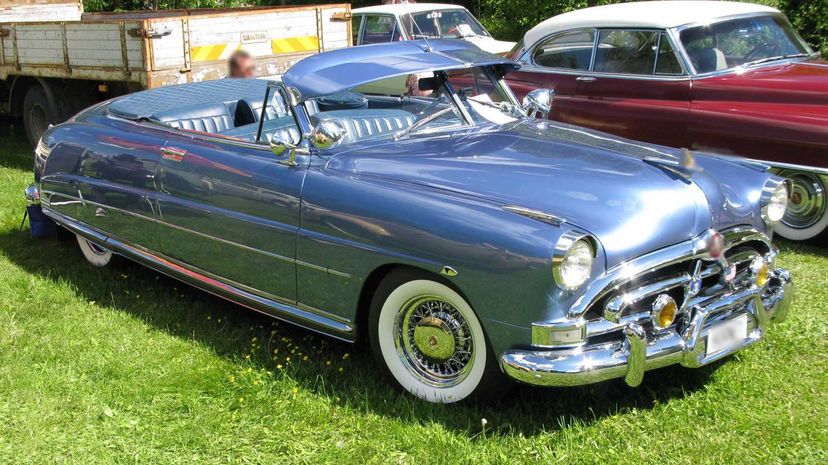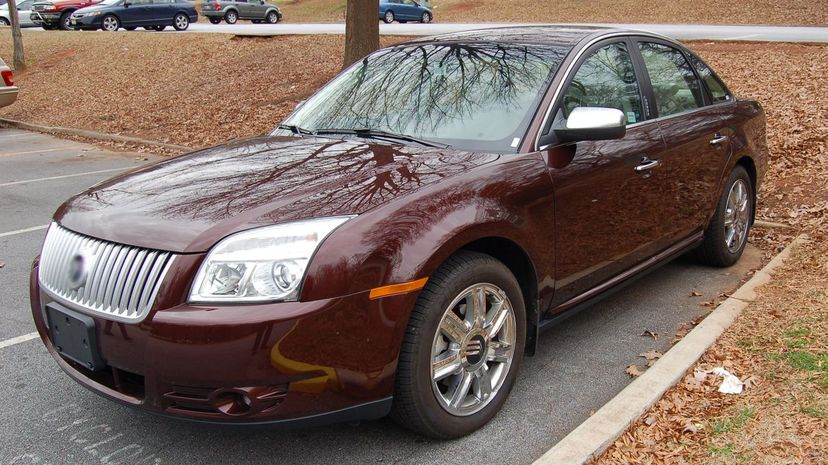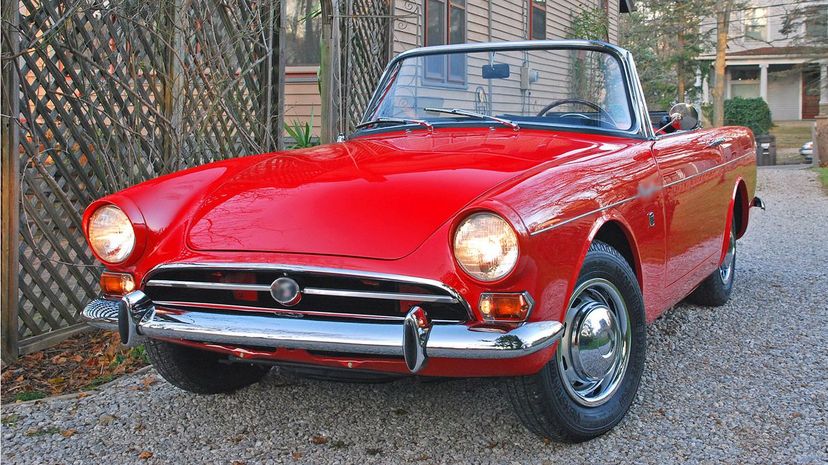
About This Quiz
Do you believe cars have personalities? No, we don't mean like "This Ford is happy" or "That Chevrolet is mad." But rather, personalities based on their names? Think about it. Would a big, bad muscle car be perceived differently if it were a Dodge Kitten? Do you think you'd question the speed of a Chevrolet Cheetah? What if it were called a Chevrolet Sloth? Changes things, doesn't it?
There's importance in names, and not just for people. Auto manufacturers go to great pains to select just the right moniker for a vehicle. They have trademarks to consider, negative connotations of words or awkward translations to think about and, quite frankly, the "coolness" factor. Does a vehicle's name convey that it's rugged, powerful, fast or luxurious?Â
It's no secret, then, why automakers choose animals to represent their new rides. Nothing says "speed" like a Roadrunner or a Leopard. When you think of something "unusual," your attention might turn to a Beetle or a Panda. You might equate ruggedness with a Ram or a Bronco. Nothing is cuter than a Bluebird or a Rabbit. (OK, maybe those last two are bad examples.)
Can you think of auto manufacturers who have turned to the animal kingdom to inspire their product line? What four- (or more) legged creature has found its way to the back of your vehicle? From Barracudas to Wildcats, we've got a wild list of cars named after animals. See how many you can catch!

The German-made Volkswagen Beetle, sometimes referred to as a "Bug," has been the vehicle entertaining passengers and backseat drivers for years. As the game goes, when you see one, you announce "Slug bug!" with a (gentle) punch administered to your neighbor. The vehicle's name translates from the German word for beetle: "Käfer."

Is it a Rabbit? It is a Golf? Volkswagen likes to keep people guessing with this one, changing its name multiple times from Rabbit to Golf and back again. This car's hatch has plenty of room for a basket of baby bunnies.

The Hudson Wasp does feel like a natural accompaniment to the Hudson Hornet, doesn't it? The Wasp and the Hornet were both produced in the 1950s, with the Wasp serving as a souped-up version of the manufacturer's Pacemaker (yes, that was really its name!).
Advertisement

The Dodge Viper is an intimidating specimen - in name if nothing else. The image of a viper brings to mind venomous snakes with giant fangs, which Dodge gave a nod to when it chose its name to rival the Ford Cobra.

Ford choose the "Raptor" name for its truck as a mash-up of the prehistoric velociraptor and modern-day birds of prey. It's a fitting name for a vehicle that chews up the road with its rugged appearance and features.

Hudson was the first auto manufacturer to ever get involved in stock car racing, pitting its virtually unbeatable Hornet against the rest of the field. The Hudson Hornet was manufactured for seven years in the 1950s.
Advertisement

The Ford Thunderbird went through two production runs, from 1954 to 1997 and again from 2002 to 2005. Though it's named for a mythological creature, Native Americans believed it possessed traits of power and strength. Those aren't shabby characteristics for a vehicle.

The Chevrolet Impala is named after a type of antelope indigenous to parts of Africa. It's likely that Chevy gave its car this name in honor of the animal's known speed and prowess in making a swift escape from predators.

The skylark is a songbird that exhibits different sounds at different times and, though they may not have intended it, Buick's Skylark shares that changeable characteristic, with its look morphing over its five decades of production.
Advertisement

There's no question that the Chevrolet Corvette Stingrays are the stuff car lovers' dreams are made of. Early on, it earned its name for the sleek shape it has, similar to the flat-bodied stingray.

The Dodge Colt is appropriately named; its small body is a perfect fit for the term "colt," which is representative of a young male horse. Manufactured from 1971 to 1994, the Colt was a subcompact vehicle.

A pinto is a type of horse, but in the case of Ford, it was one of the smallest subcompact cars ever made. It wasn't overwhelmingly popular, though, only lasting through the decade of the 1970s.
Advertisement

The Mercury Cougar, first introduced in 1967, was advertised as a step toward Ford's Thunderbird. What it really was, was a slightly souped-up version of the Ford Mustang. Cougars are known for their power and ability to challenge animals even bigger than themselves

There's some discrepancy in Ford history about whether the Mustang was named after the horse or a fighter plane from World War II. Whichever it was, a mustang is still a horse, and Ford's Mustang remains one of the brand's most popular sellers.

American bison are well-known for roaming the Great Plains, perhaps more so historically than today. The Bison, though, is a very current addition to the Chevrolet line-up, a cross between a truck and an off-road vehicle.
Advertisement

The word "jaguar" comes from a Native American word that means "he who kills with one leap," so it's not a leap to imagine a brand, Jaguar, singularly using that word to represents its entire line.

OK, we know this one is a bit of a stretch, but the CMC Gazelle really was a thing, a kit car that resembled the much pricier Mercedes-Benz. The animal known as a gazelle, on the other hand, is also a thing, a swift type of antelope found primarily in Africa.

The Plymouth Barracuda was very nearly the Plymouth Panda, but that didn't nearly represent the styling or sportiness that the world's first pony car exuded. As for the fish it's named for, the barracuda is a predatory fish with a snake-like appearance.
Advertisement

Which came first: University of Kentucky Wildcat basketball or the Buick Wildcat? (We're glad you asked.) The Buick Wildcat was introduced in 1962; the Wildcats' first basketball season dates back to 1903.

The Nissan Leopard lived a good life, in production from 1980 to 1999. It was marketed as a "personal luxury car" and sold exclusively at dealerships in Japan. So, don't be disappointed if you've never seen one actually on the road.

What better name for an American Motors Corporation vehicle than the bird that represents American itself? The Eagle was a compact car sold in the 1980s, while the eagle is America defined.
Advertisement

The Mercury Sable was on the roads off and on between 1986 and 2009. While the manufacturer shares its name with a planet in our solar system, the model can be traced to a small mammal indigenous to Russia.

If there's one thing that the name Road Runner conveys, it's speed. And the ability to escape the clutch of one Wile E. Coyote, but we digress. Plymouth did manage to strike up a deal with Warner Bros. to use the world's most famous roadrunner in its advertising.

The Fiat 124 Spider is just one of the numerous cars that have shared the Spider moniker over the years. The term dates all the way back to horse-drawn carriages, where passengers sat atop a carriage with no overhead covering - resembling, they say, a spider.
Advertisement

What emotions come to mind when you think of the Panda? Cute? Lovable? That's exactly what Fiat hopes you'll think, and why it attached that name to its cute, compact car. And, yes, while real pandas eat bamboo, this Panda needs good old-fashioned gasoline.

The Sunbeam Tiger's most notable claim to fame was as the vehicle of choice for Max Smart in the 1960s television series "Get Smart." His, of course, had a machine gun. We could only be so lucky.

The Lamborghini Urus is named after a now-extinct type of wild cattle, similar to today's calmer cows you've seen from the side of the road ... hopefully while driving your Urus SUV.
Advertisement

The Ford Bronco reached new levels of fame in 1994 when one of them driven by Al Cowlings was used to take O.J. Simpson on a slow pursuit through the streets of Los Angeles. The Bronco itself is named after a type of wild horse.

Cheetahs never win ... unless they're the type built by Chevrolet performance tuner Bill Thomas. Thomas developed the Cheetah, named after one of the world's fastest land animals, to rival the Cobra built by Carroll Shelby.

A group of foxes together is called a "skulk." A group of Volkswagen Foxes together is, well, just a group of subcompact cars. The Fox is most popular in Europe and Latin America; in Brazil, it's called a SpaceFox. How cool is that?
Advertisement

Dingo was its name-o! Wait, that's not how that song goes, but it is how Mitsubishi chose the Dingo's name, replacing the "B" in "Bingo" with a "D" in honor of its company logo. A dingo is an animal, though, similar to a dog and found only in Australia.

OK, in fairness, Porsche calls its vehicle a "Cayman," but the word is derived from the reptile, "caiman," a close relative of the alligator. A Porsche Cayman is precisely what you'd expect from the brand: luxury meets speed.

When Datsun introduced the Honeybee in the mid-1970s, it did so to appeal to buyers on a budget. But that doesn't mean those buyers didn't want something distinctive, which is exactly what the car's striping and accompanying honeybee decal gave them.
Advertisement

A charger is a war horse. Sounds tough, right? That's exactly what Dodge thought when it chose the name for its muscly, horsepower-fueled Charger. And who wouldn't want a car you could take into battle?

The Rambler Marlin (later the AMC Marlin) was in production for only a short period in the 1960s. Its fishy name is fitting, then, since some varieties of the actual marlin are considered vulnerable to extinction.

The Mazda Bongo is a van and, yes, it's sort of shaped like a drum, but that's not quite where its name comes from. Instead, it shares a name with the African bongo, a type of antelope.
Advertisement

The Porsche Macan, a smaller version of its Cayenne SUV, earned its name for its "suppleness, power and fascination," according to company execs. Perhaps the fascination part comes from the "Macan" name itself, which comes from the Indonesian word for "tiger."

Maybe the Reliant Robin has a hard time staying upright because it only has three wheels. Yeah, you heard that right. Three. Wheels. "Top Gear" famously rolled one similar to Mr. Bean, who regularly rolled another Reliant product, the Regal.

Ever heard of the Datsun (later, Nissan) Bluebird? Don't worry if you haven't. This Japanese-made car enjoys greater popularity in international circles and even serves as a model frequently used as a taxi!
Advertisement

When you think tough, think ram ... which one is up to you! That's exactly what Dodge hoped to convey with its Ram truck, synonymous with the tough-as-nails male bighorn sheep whose horns can weigh up to 30 pounds by themselves.